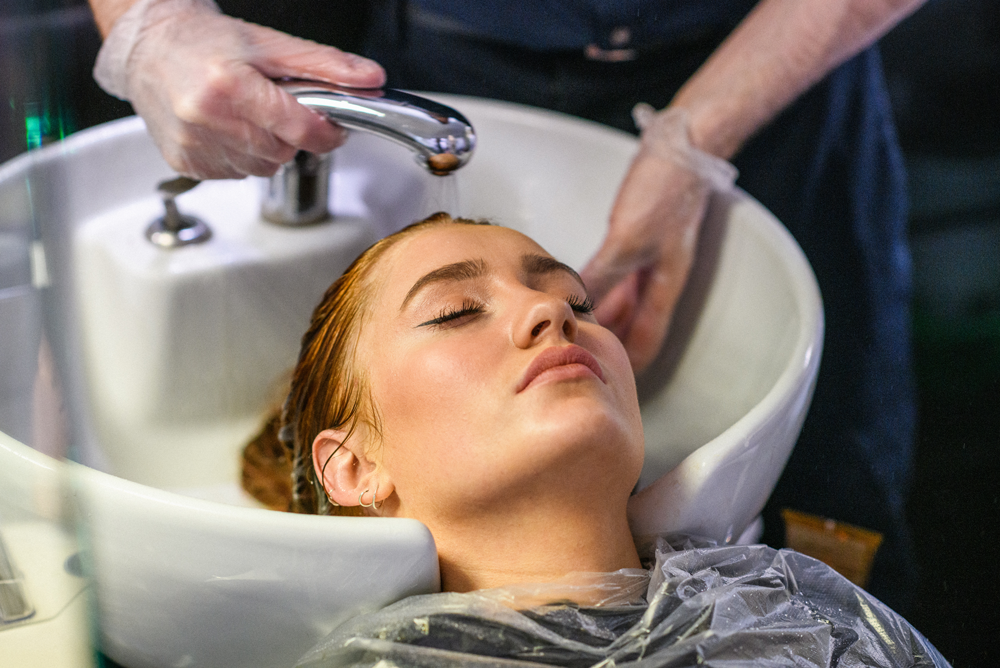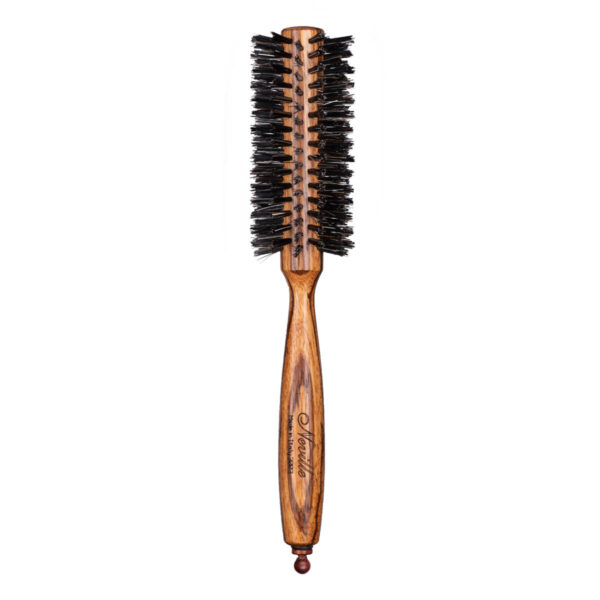Winter months are known to cause havoc on our hair due to the lack of moisture in the air, so if you have a classic case of winter hair, read on! We turn to senior colourist & stylist Domenico Casella to understand what really happens to our hair during those winter months and why, as well as the best products and treatments available to get your hair back into shape before spring.
So, what causes hair breakage?
There are a multitude of reasons why you may be experiencing breakage over winter months explains Domenico. First and foremost, your hair’s exposure to harsh cold elements such as rain, wind and snow and secondly the constant transition between cold weather and heated indoors. More often than not, this will cause your hair to be stripped from its moisture. Add to that, frequent colouring and the use of heat tools such as curling irons, straighteners or a hairdryer, and it’s easy enough to understand why your hair might be in distress. Not to mention a probably less attentive approach to nutrition, meaning your intake of protein, biotin, zinc of Omega 3 is lower than usual.
The degree of breakage will vary from person to person, with some people experiencing staticky hair, split ends or even hairline breakage.
It is important to note that hairline breakage occurs as the hair around the face tends to be finer than the rest of your hair. This can be caused by excessive bleaching, chemical treatments or repeated wear of high-tension hairstyles.
How to prevent breakage?
Although it may take time to reverse the signs of breakage, there are simple steps that can be taken and included in your haircare routine to prevent breakage from the get go.
This includes:
- Avoid rubbing your hair with a towel and instead dab hair to remove excess water as wet hair is prone to break more easily.
- Use a large paddle brush to untangle your hair after it has been washed and start from the tips working your way up and never the other way around.
- Always apply a heat protector before using any heat appliance. Domenico recommends a lightweight spray heat protector for oily and fine hair, and a creamy / oily textured protector for thicker hair.
- Do not colour your hair at home, always seek professional advice.
- Maintain a healthy diet.
- Wear a protective hairstyle such as braids or messy buns.
- Swap metallic or ceramic brushes for wooden brushes.
- Regular visits to the salon to your trusted professional, who can recommend an appropriate haircare routine for your specific requirements.
However, if the damage is done fear not! At Neville Hair and Beauty, we have developed an extensive list of treatments designed to tackle pretty much any hair concern and breakage features at the top of our list. But before we dive into the different professional treatments available, it is important to understand growth cycle and how long it is likely to take your hair to recover.
What is the hair growth cycle?
There are 4 stages in your natural hair cycle: Anagen, Catagen, Telogen & Exogen.
- Anagen: Also commonly known as the ‘Active Phase’ refers to the phase when the cells in the root of your hair are dividing the most rapidly and therefore forming new hair. During this phase, your hair grows at an average of 15cm a year. The ‘Active Phase’ generally lasts between 3-5 years but can vary.
- Catagen: Following the Anagen phase your hair will enter a 10-day phase called Catagen. This is a short transitional phase which signals the end of the hair growth. It also cuts the blood flow from the cells which produce new hair.
- Telogen: After the transitional period, your hair will enter the telogen phase, also known as the resting period. This phase lasts approximately 3 months and simply means that during that time your hair will not actively grow.
- Exogen: The last stage in the hair growth cycle is Exogen, and as the name suggests, it refers to the phase where you shed hair.
Once the cycle is complete, the process will start again. It is important to note that each hair follicle has its individual growth cycle, otherwise we’d frequently end up with no hair.
With that in mind, it is likely to take between 4-6 months to completely restore the health of your hair providing you follow your stylist’s advice.
What are the best professional hair treatments for breakage?
PHILIP MARTIN’S HERBAL HAIR REMEDY
With a blended mix of natural herbs and macadamia oil, this treatment is applied to the roots, lengths and ends of the hair and left to deeply nourish for thirty minutes. It is then washed off at the backwash using sulphate free shampoo and conditioner. Your hair will be left moisturised, glossy and weightless
METAL DETOX
Metal Detox is a four-step professional treatment that is designed to prepare the hair before any colour appointment and prevent breakage post service. It aims to rid the hair of any metal that could be affecting the longevity of the colour. This treatment is an ideal accompaniment to any hair colour appointment.
FORCE REPAIR
This treatment is most suited to hair that has been damaged by chemical processes and will leave the hair feeling restored and revitalised.
HAIR BOTOX
Hair Botox is a treatment that targets frizzy hair and split ends. Your hair will feel lightweight, tamed and shiny.
What are the best at home haircare products for breakage?
Manage and stop breakage now with our tips, to enjoy spring safe in the knowledge you really are living your best hair life!










